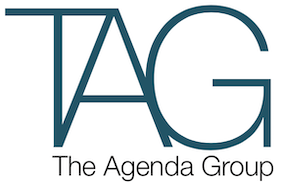Another round of negotiations for the Regional Comprehensive Economic Partnership (RCEP) will kick off next Monday in Brunei, but what does this mean in light of the TPP?
Trade Minister Andrew Robb tabled the Trans Pacific Partnership (TPP) trade deal for ratification in parliament this Tuesday, which once implemented, will include the US, Brunei, Canada, Chile, Japan, Malaysia, Mexico, New Zealand, Peru, Singapore and Vietnam, accounting for roughly forty per cent of global GDP, thirty per cent of global exports and twenty-five per cent of global imports. The TPP’s membership may grow yet, with the Philippines, South Korea, Thailand and Taiwan expressing an interest in joining the ‘open platform.’ Many have pitched the TPP as a US push to contain China’s influence, but China declined after it was in fact part of the initial negotiating group, even ‘putting out feelers’ with the US last June, but it was too late to effectively join discussions in their eighth year.
India is also currently outside the TPP, but is part of the Regional Comprehensive Economic Partnership (RCEP) negotiations launched by leaders from ASEAN in November 2012, and largely considered China’s answer to the TPP. The RCEP is an ASEAN-centred proposal not unlike the TPP’s ‘open platform’ that would initially include the ten ASEAN member states and countries with existing FTAs with ASEAN: Australia, China, India, Japan, Republic of Korea and New Zealand.
The RCEP is aimed at building on Australia’s existing FTAs with ASEAN and New Zealand, AANZFTA, complementing Australia’s participation in bilateral FTAs with other countries and the Trans-Pacific Partnership Agreement (TPP). The 16 RCEP participating countries account for nearly 30 per cent of global GDP, half of the world’s population, and over a quarter of world exports.
However, the RCEP will likely have lesser requirements for investment, economic and technical cooperation, intellectual property, competition, dispute settlement and other issues due to the initial involvement of China and the need for participating states to comply with requirements.
Australia stands to gain much from the negotiations, with almost 60 per cent of Australia’s two-way trade, and 70 per cent of Australia’s goods and services exports represented with the other participating ASEAN nations.
Pressure has increased on participating nations to reach agreement after the signing of the TPP and an initial RCEP deadline of 2015 missed. Participants are pushing for the same kind of focussed negotiation as occurred with the TPP and for possible monthly or bimonthly meetings to speed up agreement and meat the revised 2016 deadline.
After next week’s meetings in Brunei, the talks will move to Perth in April, New Zealand in June with the final meeting in Laos in September.
Those currently outside the TPP like India have redoubled efforts to focus the RCEP talks, and in particular China has renewed the push as it stands to lose ground to manufacturing competitors and TPP members such as Vietnam. China is aiming for a regional network to offset projected losses from not joining the TPP. Reported the South China Morning Post, leading economist at the People’s Bank of China, Ma Jun, said China could forfeit a 2.2 percent boost to GDP if it does not join the TPP.
Realistically, China will most likely remain outside the TPP because of the entrenched ‘high standards’ in the agreement relating to intellectual property, labour, food safety and environmental rules, but particularly because of the restrictions on the business activities of state enterprises in the pact. Signing on to the TPP would necessitate wider internet access and a fundamental change in the Chinese economic model and opening of the services sector which has thus far stalled the Bilateral Investment Treaty with the United States.
Because of China’s instrumental role in the RCEP, the standards and restrictions for participating countries will likely be lower than with the TPP.
A lot of progress has been made in RCEP negotiations since 2012, with India and China agreeing to remove duties on 42.5 per cent of items for each other, and the ASEAN bloc, Japan, South Korea and Australia have decided to eliminate duties on 80 per cent of items for India.
Despite the obvious incentives and push for China to stay a part of RCEP, there are some who argue that that Chinese President Xi Jinping may ultimately reject the agreement. Despite being responsible for issuance of an impressive restructuring plan in November 2013 at the Communist Party’s Third Plenum, there has been little implementation since and instead has lead the country to a system of increased state involvement, shutting out foreign companies with targeted prosecutions and recombining large state businesses back into formal monopolies.
With recent criticism of the TPP ratification process in Australia and mass protests in New Zealand, it remains to be seen whether the government will be able to successfully make the case for the RCEP in Australia.
